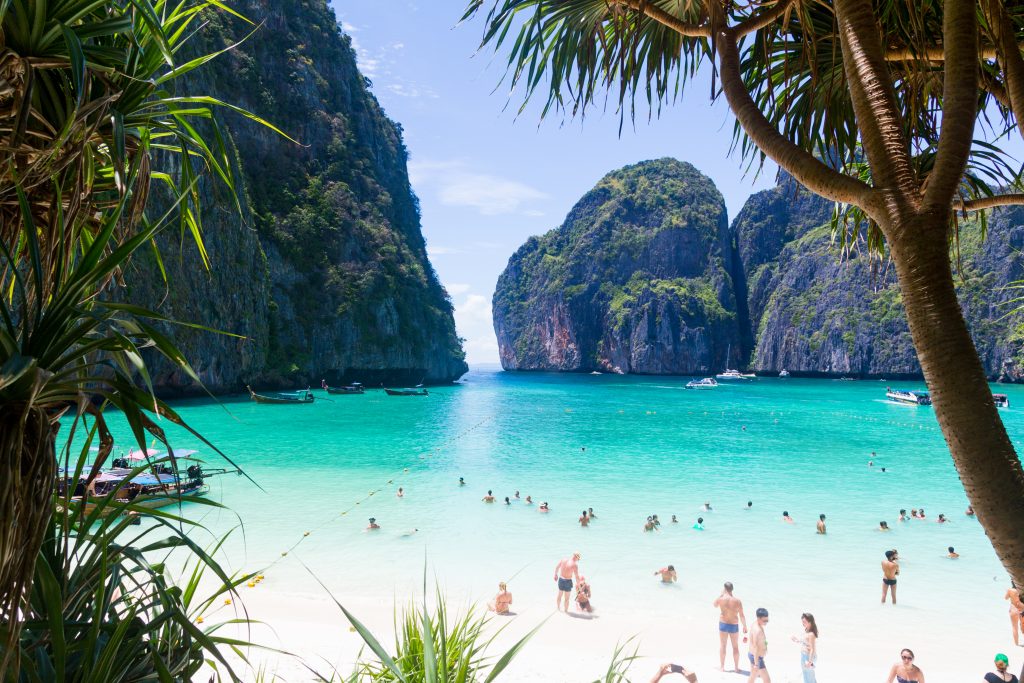Adventurers and travellers hoping to witness the stunning white beaches and towering limestone cliffs of Maya Bay, Thailand, might have to change their holiday plans.
Although due to re-open to the public this month after a temporary tourist ban, Thailand’s Department of National Parks, Wildlife and Plant Conservation (DNP) have announced the Maya Bay ban will stand indefinitely.
It is not unusual for the DNP to close parks and beaches off from tourists, with a variety of spaces being closed due to extreme weather impacts or the need for ecological regrowth, what has come as a surprise is that Maya Bay is still closed after its original Tourist Ban implemented in July.
The DNP expressed that Maya Bay saw as many as 2.5 million visitors in 2018, which is a rise of half a million people year on year. The majority of travellers visit from Phuket, which is less than an hours travel away from Maya Bay by speed boat.
Maya Bay, part of Thailand’s hot spots for travellers, is part of Noppharat Thara-Mu Ko Phi Phi National Park, which has been popular since the film release of The Beach, starring Leonardo Dicaprio, released in the year 2000.
The original plan for a fourth month rejuvenation period was aiming at reviving the island’s decimated corals in a bid to preserve the island’s nature. It was also discussed that the area will be installed with boat jetties for tourists, amongst the implementation of other activities.
Concerns for some of Thailand’s most beautiful natural beaches and clear blue waters being under environmental attack are great, as some areas simply cannot keep up with the flow of human travellers. Natural areas need time to rejuvenate from excessive human activity, as Maya Bay has long since been a location for young people to sunbathe, snorkel, party and take pictures, the island is in need of a well deserved rest.
Almost twenty years of heavy tourist traffic has taken its toll on Maya Bay, and the ecosystem is still suffering devastation after a four month break. Aspiring travellers are not the only people left disappointed by the news, as local citizens use destinations like Maya Bay as areas of huge financial drive.
Maya Bay prohibits overnight stays, with no hotels, hostels or housing on the island there is not one inhabitant and people tend to enjoy the islands beauty for a day long period before returning to Phuket, or other nearby areas.
The decision for extended closure follows on from the continued closure of Boracay, which is due to reopen to tourists this month although not completely. Unlike Maya Bay, which is a small isolated space, Boracay is home to around 17,000 people, many of whom are locals that are invested in the tourist industry. The DNP released information over the ongoing 6 month long closure of Boracay to stem from its once natural beauty and crystal waters becoming a cesspool.
Should both Maya Bay and Boracay re-open in their entirety, which in time it is believed they will, there is thought to be a new plan in place that manages tourist control in a bid to keep the environment healthy. In the meantime, locals can apply for financial support through the Philippines government, who offer approved funding to help local economies during tourist closures.
Travellers are reminded to ensure the environments visited are treated with care and respect, and that the natural wildlife is protected, and litter is not left behind or discarded into the sea.



